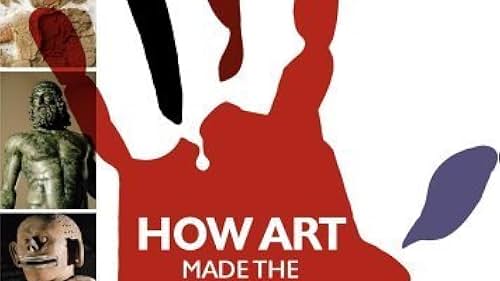Top-rated
Sat, Jul 9, 2005
In our time, the use of visual advertising in political campaigns is blatantly obvious and professionalized, but in essence the techniques to use the power of images date back to political propaganda since Antiquity. In the prehistory, everybody knew the leader of the small community physically, but soon that changed, creating a political vocation for art. Next to Stonehenge was found a Bronze age grave, 2000 years before the Romans, extremely rich, belonging to a Central European prince, who may well have ordered the monument build, the first known to use gold jewelry as 'regalia', a visual status symbol never went out of use. Darius, Achaemenid (Persian) king of kings of the first true empire, millions of subjects from twenty nations, made his capital a monumental demonstration of his power and of unity trough eclecticism, not just an imposed Persian style, and invented the political logo -representing him as an archer, symbol of the steadfast attitude required for a good ruler- as well as the use of coins to spread it among his people throughout the vast territory; Alexander the Great adopted these principles, with one difference, setting an example for all Hellenistic rulers: the realistic individual political portrait, instead of earlier stereotypes, of the leader. When Octavian needed to reunite Rome, split after Caesar's death between conservatively dressing republicans and 'modern' monarchists, he had hybrid statues made, even a general's image which is simultaneously disarming, even barefoot, just as the principate he established constituted a crowned republic, almost autocratic in all but name. Another technique is stereotypical vilification of enemies in images.
Top-rated
Sat, Jul 16, 2005
In essence, the use of images to tell stories, as in movies, TV or cartoons, relies upon the same powerful techniques since Antiquity. Cuneiform, the world's oldest writing, sets in the world oldest and long greatest city, Uruk in early Mesopotamia (southern Iraq), the oldest recorded story, the still told Gilgamesh epic. As every great story it has a hero, defined by the events and his spiritual and moral ability to respond to them. The Assyrian (northern Iraq) king Assurbanipal had it transposed from -then no longer legible- cuneiform to images, only starring himself in four relief sculptures in his Ninive palace, as a mini-cartoon about the lion hunt, and added far more with thousands of 'extra characters' about his victorious war against the Elamites, an intrigue complete with side-plots. The missing element, emotion, came with the Greek mythological sculptures, notably since Homer's Odysseia.
Top-rated
Sat, Jul 23, 2005
Like death is a major theme in stories, images of the death are of all time. Even the 9,000 year old site at Jericho contains nine artistically decorated human skulls, like many other cultures still produce, even today in tribal New Guinea. While some are meant to reconcile the audience with mortality by showing the afterlife, in other cultures human sacrifices and cruel warfare give rise to morbid images, specifically designed to frighten. Starting with the Etruscans, a same work of art may refer both to afterlife and death.

